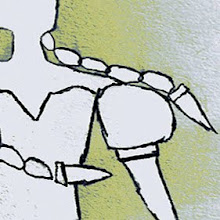Napoleon as a Young Boy
Seeing works of Goya, Dürer, Mantegna, and Arcimboldo made me realize that there was a multitude of fascinating worlds out there. Even as a child, I felt that I needed a world of my own. Starting drawing early in life also taught me the importance of discipline and routine. Just like any other exercise, drawing needs to be practised regularly; otherwise, you lose form.
I learned how to draw by closely studying the works of the German masters. The basis of my technique was formed by looking at engravings and drawings by Dürer, Martin Schongauer, Lucas Cranach, and Hans Baldung Grien. At various other points in my life, I’ve also been inspired by artists such as Wilhelm von Kaulbach, Max Klinger, and Eduard Thöny.
I’m deeply in awe of Rei Kawakubo [a Japanese fashion designer] and her work. She’s most definitely one of my heroes.
There are lots of reasons why I find folklore enjoyable, important, and inspiring. Folk tales are full of deeply powerful imagery.
I feel that, as an artist, it’s my job to give people pleasure. I would never draw anything that lacked beauty or life.
[whole interview here]
Russian-born Vania Zouravliov was inspired from an early age by influences as diverse as The Bible, Dante’s Divine Comedy, early Disney animations and North American Indians.
I would add the characteristic bicorne hat to the list.
Ballet 2
Beyond the Clouds
Columbina
Furstin der Finsternis
Galliano
Girl Color
Kitsune
Lilin
Napoleon as a Young Boy
Queen
Rooster 2
Shi Shi
Stella 1
Stella 2
The Head
Tiger of Sweden
Viv
White Rooster
Icon 1
Bow Wow Wow - I want candy (live! 80s)



















